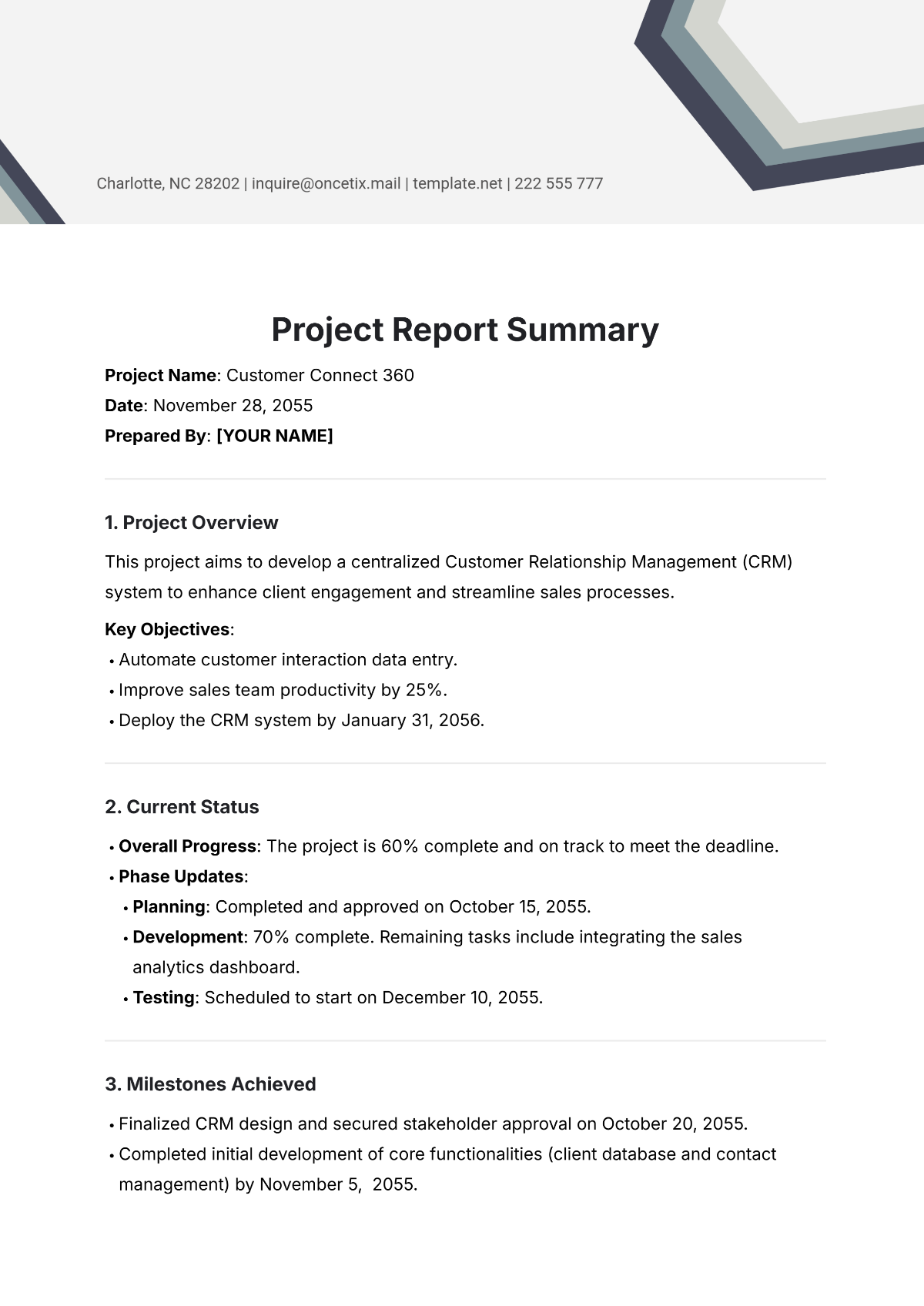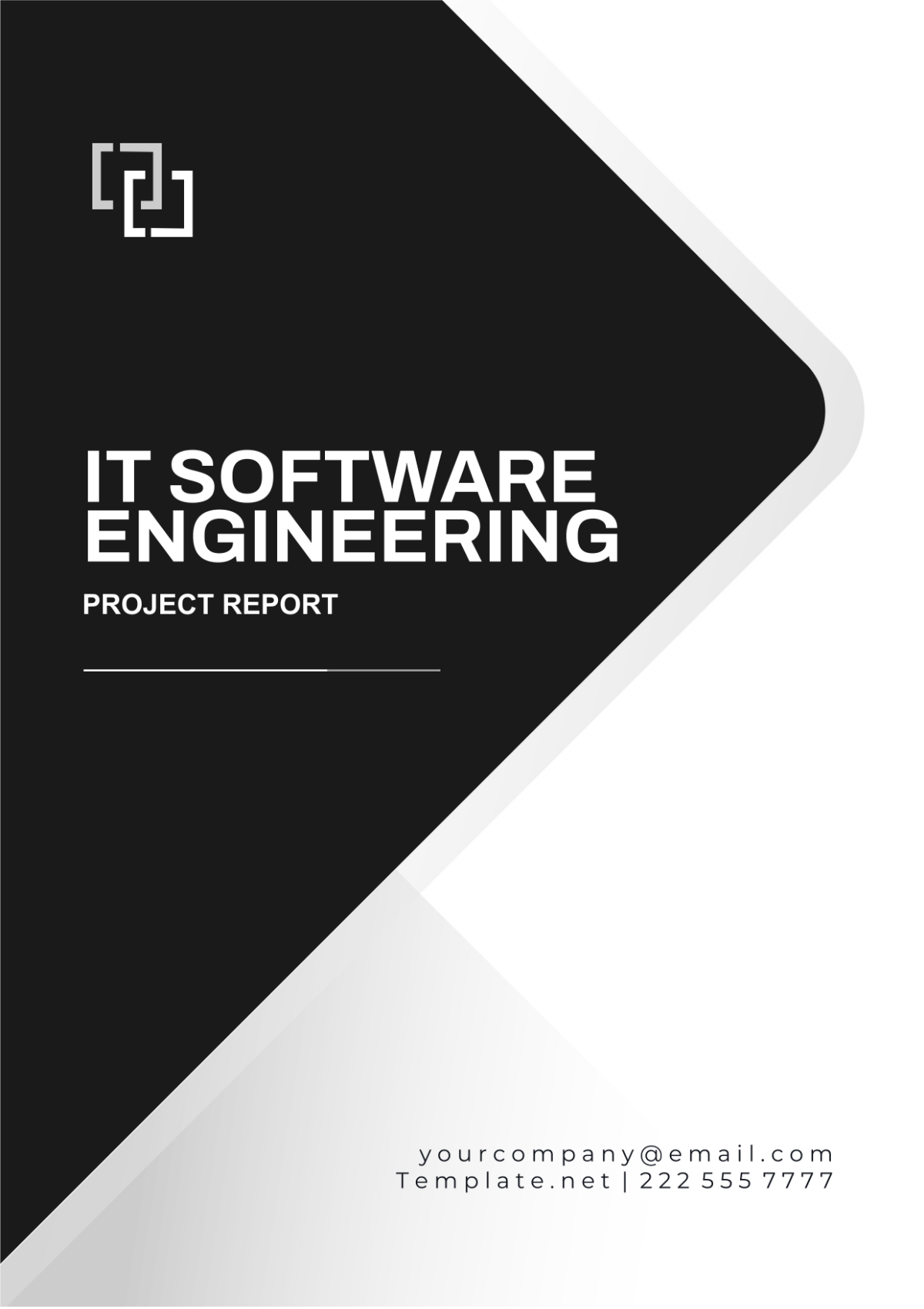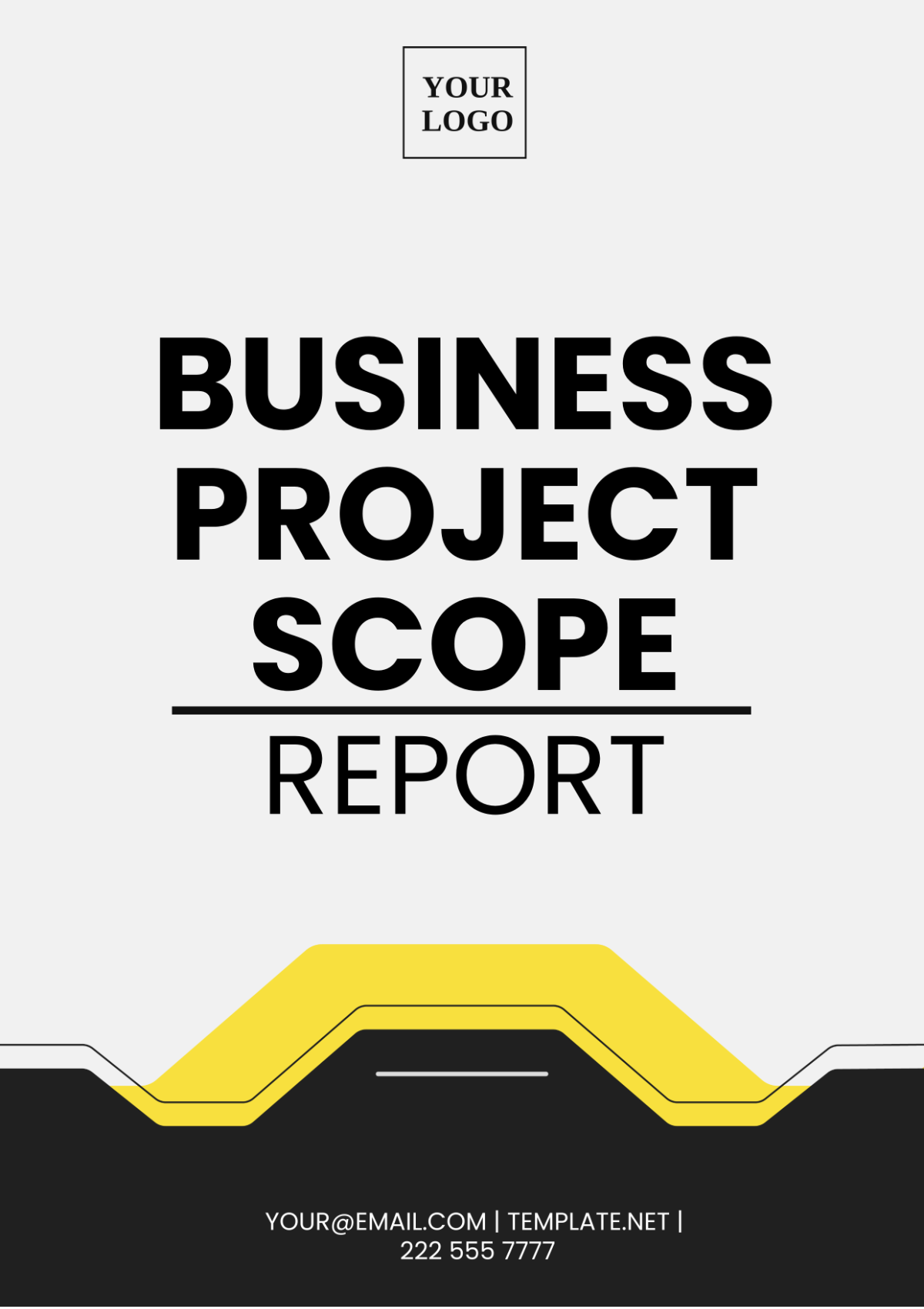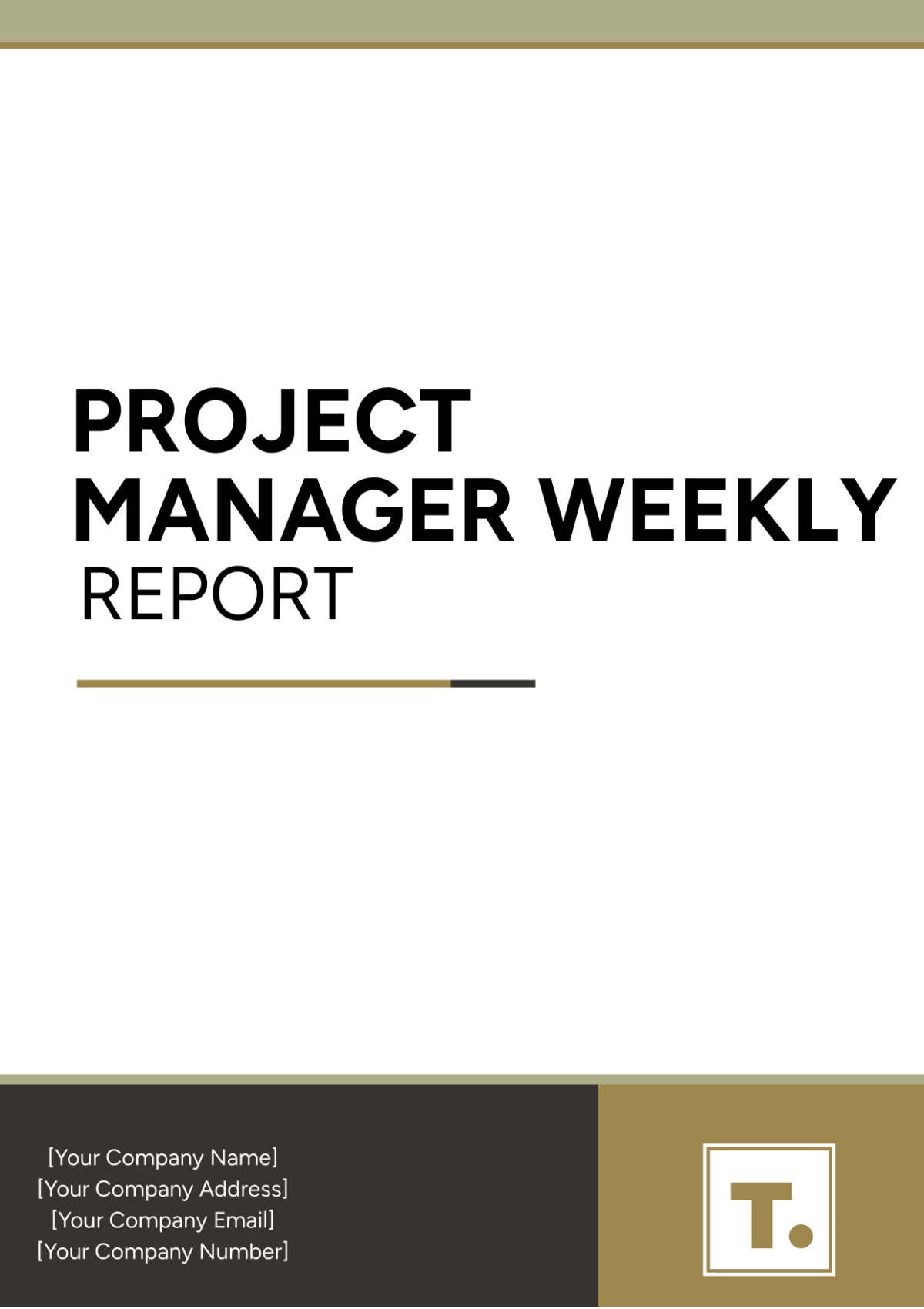New Business Project Report Design
Prepared by: | [Your Name] |
Company: | [Your Company Name] |
Date: | [Date] |
I. Executive Summary
The New Business Project is focused on the development and launch of a software platform designed for small and medium-sized businesses (SMBs). This platform will offer customizable, scalable, and affordable solutions to help SMBs streamline their operations, improve customer engagement, and increase overall productivity. The report outlines the project’s key objectives, market analysis, strategy, budget, timeline, and risk management approach, all of which form the foundation for a successful launch and sustained growth.
II. Project Objectives
A. Develop a User-Friendly Software Platform
The primary objective is to develop a flexible software suite that can be customized to meet the specific needs of SMBs, enhancing their operational efficiency.
B. Achieve Market Penetration Within the First Year
The goal is to acquire 500 paying customers within the first 12 months of product launch, driven by targeted marketing campaigns and strategic partnerships.
C. Secure Seed Funding of $1 Million
The project aims to secure initial funding from investors to support software development, marketing efforts, and team expansion.
III. Market Research/Analysis
A. Market Trends
The SMB software market is experiencing rapid growth. The shift toward cloud-based solutions has accelerated, with businesses increasingly adopting affordable, scalable software. The global market for SMB software is expected to grow at a rate of 10% annually over the next five years.
B. Target Audience
The target market includes small businesses with 10 to 200 employees across industries such as retail, healthcare, and services. These businesses typically face challenges in accessing affordable software solutions tailored to their specific needs.
C. Competitive Analysis
Competitors in the market, such asWinGroup and GoWorld, provide SMB software. However, there is a gap in the market for highly customizable tools that are also affordable and easy to use. Our product will fill this gap by offering a more flexible and user-friendly solution at a competitive price.
IV. Strategy and Approach
A. Product Development
The software will be developed using agile methodologies to ensure a responsive, iterative development process. The platform will be built on cloud technologies to guarantee scalability, reliability, and easy maintenance.
B. Marketing Strategy
The marketing plan will leverage digital advertising, influencer partnerships, and targeted email outreach. Free trials and introductory offers will encourage businesses to adopt the product, while content marketing will help establish thought leadership in the SMB space.
C. Sales Strategy
Sales will be driven through a combination of direct sales teams, online marketing, and partnerships with business consultants. A tiered pricing model will be offered to meet the diverse budgets of SMBs.
V. Budget and Financial Plan
A. Development Costs
The projected cost for the initial development phase is $500,000, which covers software design, programming, testing, and deployment.
B. Marketing and Sales Expenses
A budget of $300,000 will be allocated for marketing efforts, including digital campaigns, content creation, and sales team compensation.
C. Operational Costs
Annual operational expenses are expected to be $200,000, covering customer support, cloud hosting, and salaries for the team.
D. Revenue Projections
Revenue is expected to reach $1 million in the first year through subscription-based pricing and direct sales. By year three, revenue is projected to grow to $5 million as the customer base expands.
VI. Timeline and Milestones
A. Phase 1: Development and Pre-launch (Months 1-6)
Finalize product design and development.
Secure seed funding and initial team hiring.
Begin marketing campaigns for brand awareness.
B. Phase 2: Launch and Customer Acquisition (Months 7-12)
Launch the product and acquire 500 paying customers.
Implement additional marketing strategies and sales outreach.
C. Phase 3: Growth and Expansion (Year 2 and Beyond)
Expand product features based on user feedback.
Increase marketing efforts to attract a larger customer base.
Scale the business and focus on improving customer retention.
VII. Risk Assessment and Mitigation
A. Market Risks
There is a risk that the product may not meet the market’s needs, which could affect adoption rates. To mitigate this, the product will undergo pilot testing with a small group of users, and feedback will be used to refine the platform before the full launch.
B. Financial Risks
Securing adequate funding is a critical factor for the success of the project. If seed funding is not raised as planned, the project may face delays or require scaling back. To manage this, multiple funding sources will be explored, including venture capital and angel investors.
C. Technical Risks
There is a risk that the software may face bugs or performance issues during launch. To mitigate this, a dedicated team of experienced developers will oversee the technical development, and thorough testing will be conducted before release.
VIII. Conclusion
The New Business Project offers an exciting opportunity to provide SMBs with a tailored, affordable software solution. The project’s strong market positioning, combined with a detailed development and marketing strategy, sets the foundation for a successful product launch. With a clear focus on achieving financial targets, market penetration, and customer satisfaction, the project is poised for sustainable growth in the SMB software market.







































